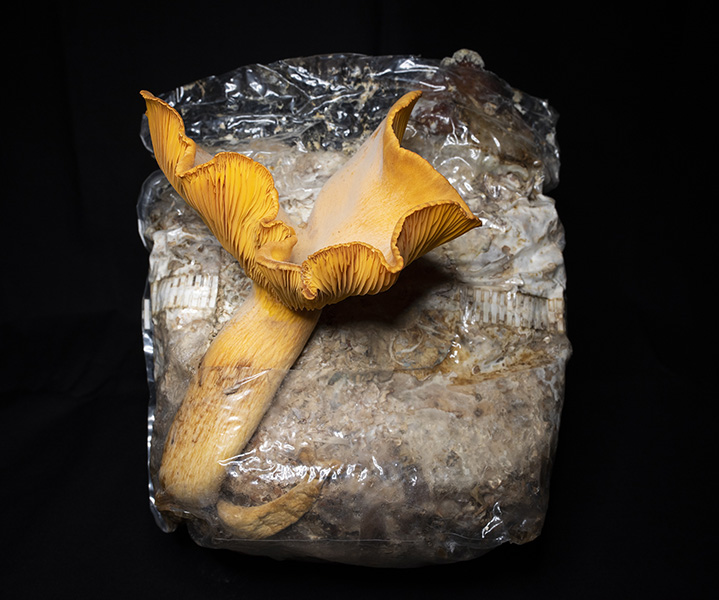Omphalotus olearius A Realitycheck

Move the slider to compare the images.
Bag with fruiting substrate / Mushroom 4 / 2.1.2021 (F3.5 / 7min)
Introduction
A whimsical sparkle and glow at night, here in our forest, from a living organism?
We had to see that with own eyes.
You can read in mushroom identification books: the fresh fruiting bodies of the jack-o‘-lantern mushroom (Omphalotus olearius) glow in the night.
Also the term lantern in the english name already points to the glow.
So the mushroom is able to glow and with a lot of luck, could also be found here in Switzerland, although not many sightings have been reported yet.
The fungus is native to warm, Mediterranean climates. It is suspected that this fungal species could spread further and further north due to
global warming.
It is said that there are known sites in Germany where the jack-o‘-lantern mushroom was not native until now, but has now suddenly appeared.
This aroused our interest, we don't know anyone who has seen the phenomenon with own eyes and there are very few pictures of luminous fruiting bodies of this mushroom species on the internet.
Where could we find the mushroom?
This gave us the idea to grow it, because a supplier from Austria gluckspilze.com offers jack-o‘-lantern mushroom mycelium for sale.
We bought a bag of O. olearius grain spawn.
To be noted: Jack-o'-lantern mushroom could be mistaken as an edible chanterelle mushroom - but caution, Omphalotus olearius is very poisonous!!!


The grain spawn after arrival on 30.9.2020. It was clearly glowing in the dark. (F4.5 / 4min)
Mastergrain (rye based)
Fruiting substrates
The grain spawn can be stored in the refrigerator for up to two weeks, but after that it should be processed.
The mycelium must be transferred to a fresh substrate that is as close as possible to the natural food of the fungus.
The fungus usually grows on olive trees, in wine-growing areas, also found on fruit trees, ash tree, sweet chestnut and other deciduous trees. (Source: Grundkurs Pilzbestimmung Rita Lüder)

Some materials for fruiting substrate
Suitable Substrate:
hardwood (most suitable: oleaster, olive tree, oak, chestnut, beech)
Alternatively, the following is also suitable:
Straw, paper, cardboard, coffee grounds
see: Growing Mushrooms In Coffee Grounds from GroCycle
We started also some bags with cardboard & coffee grounds as substrate. All substrate variants showed very similar results.
Recipe for fruiting substrate
| Wood chips | 16% |
|---|---|
| Wheat bran | 8.5% |
| Sawdust | 33% |
| Gypsum | 1.3% |
| Water | 41% |
- The wood chips are completely covered with cold water and soaked overnight
- Let the wood chips drain for 15 minutes
- Fill all the ingredients into sterilizable bags and mix well
- Sterilise in a pressure cooker for 60 to 70 min.
- Let cool down
- Add to each substrate bag under the cleanest possible conditions (sterile) from the grain brood
- Store the inoculated substrate in a dark and clean place
- It could be beneficial to reshake the bag after 5–7 days
- After 2-3 weeks the substrate should have grown through with mycelium
- Ready for for the fruiting phase
The mycelium of O. olearius shows the phenomenon of bioluminescence and glows differently depending on the stage of growth.
Here are some examples of bioluminescent mycelium that we have cultivated in substrate bags and preserving jars.
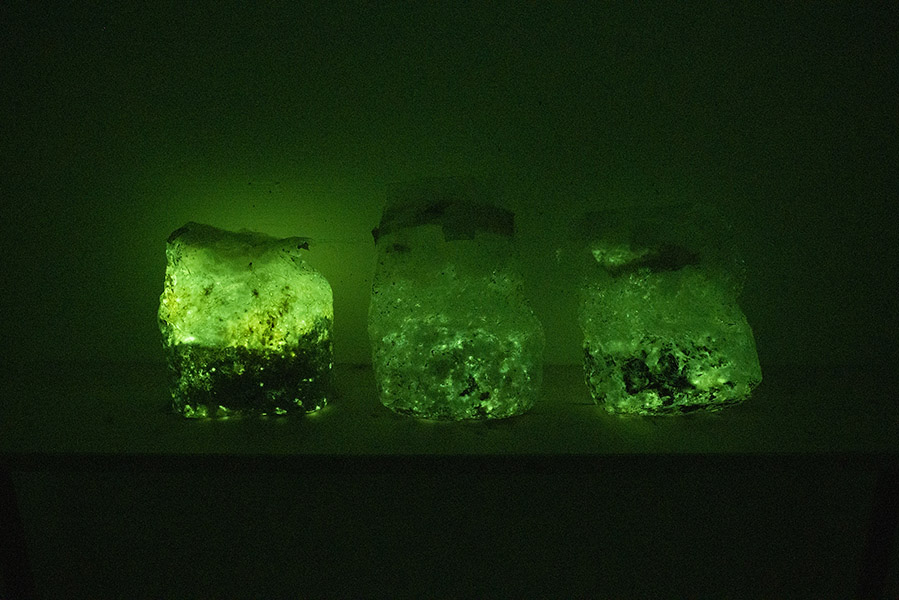
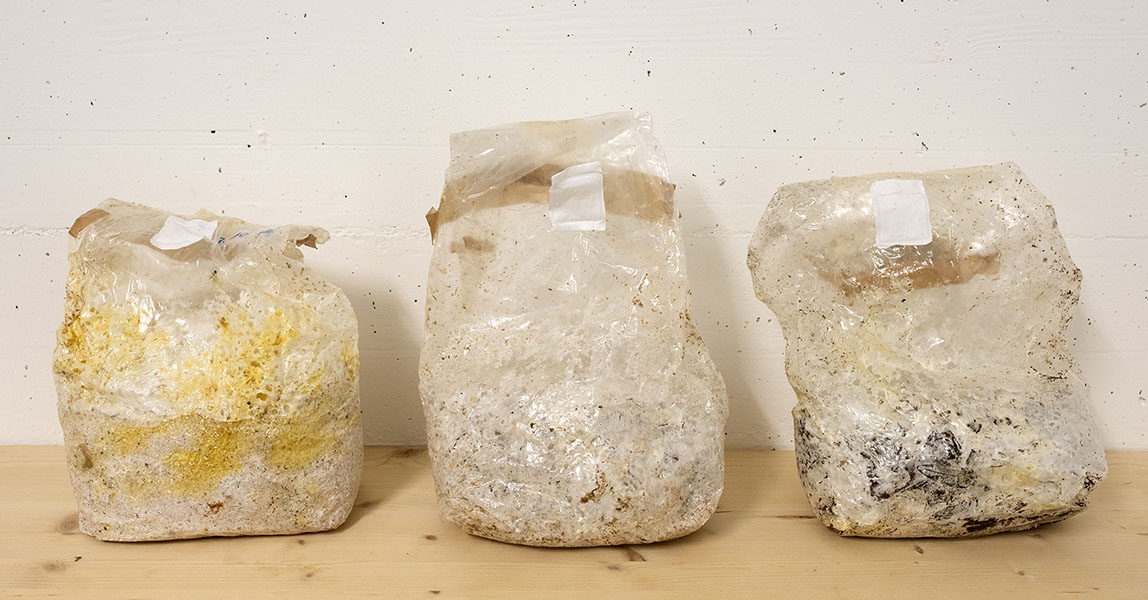

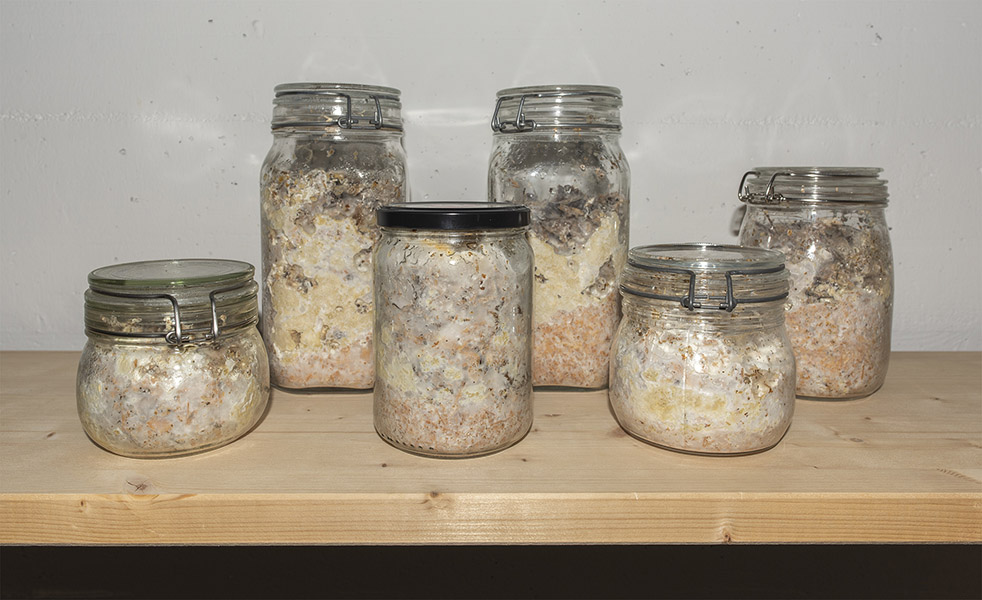

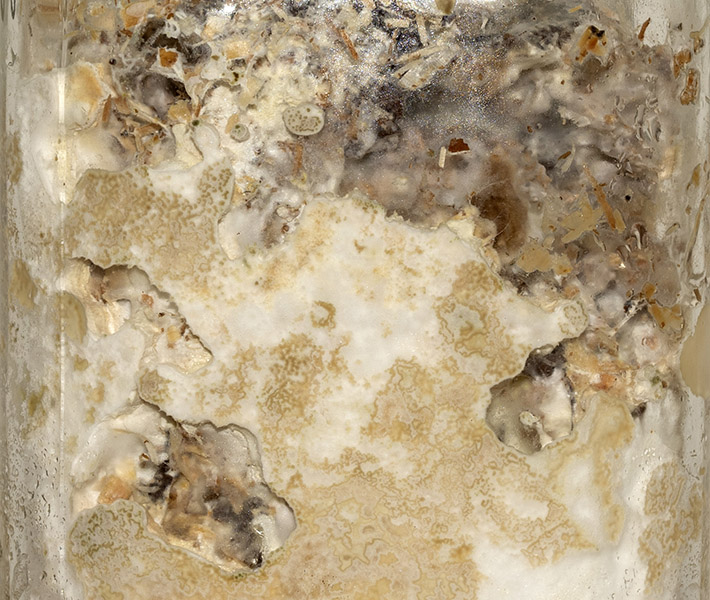
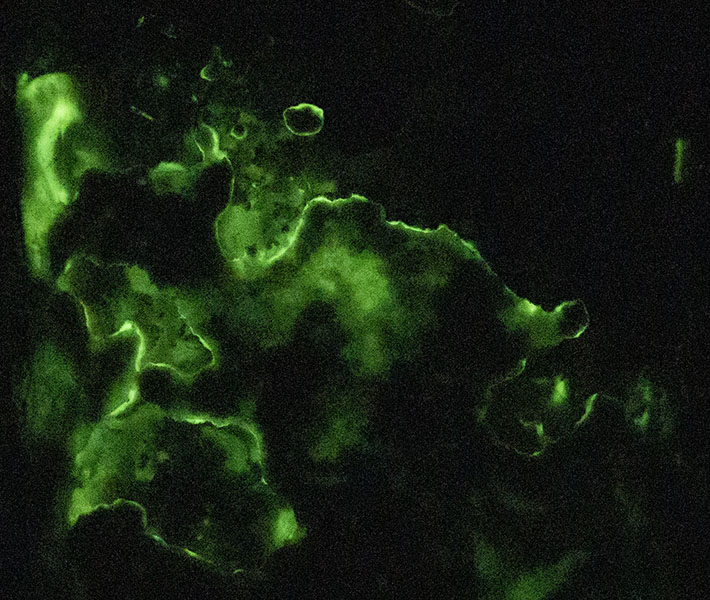
Fructuation
For the fruiting phase, cut a hole in the substrate bag. The hope is that the fungus will form a fruiting body here.
High humidity and the right temperature are important.
Unfortunately, more precise information on cultivation for this mushroom is not yet available.
(Cultivation is still under research!)
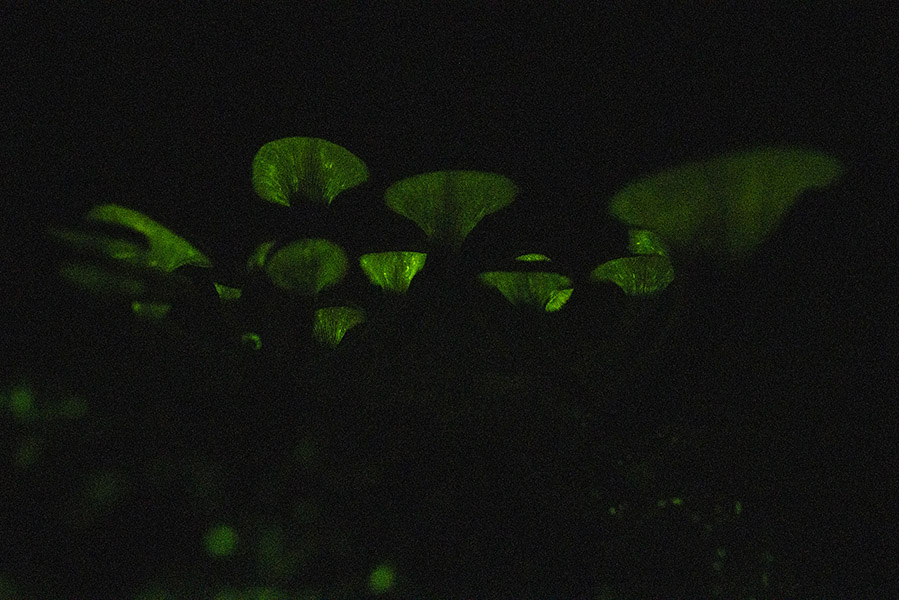
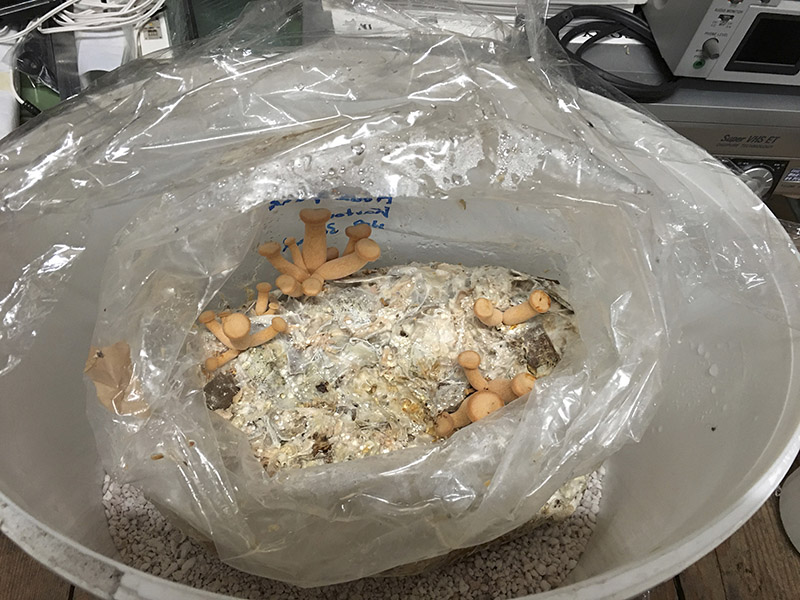
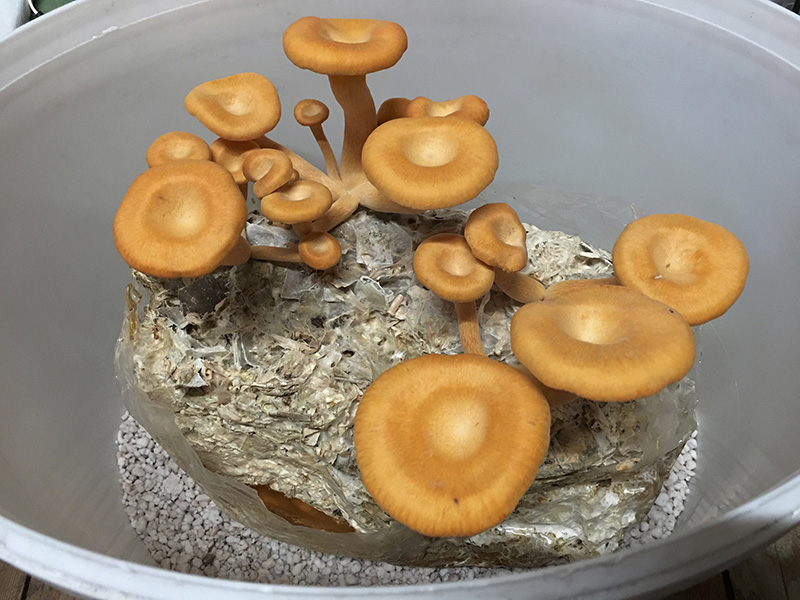
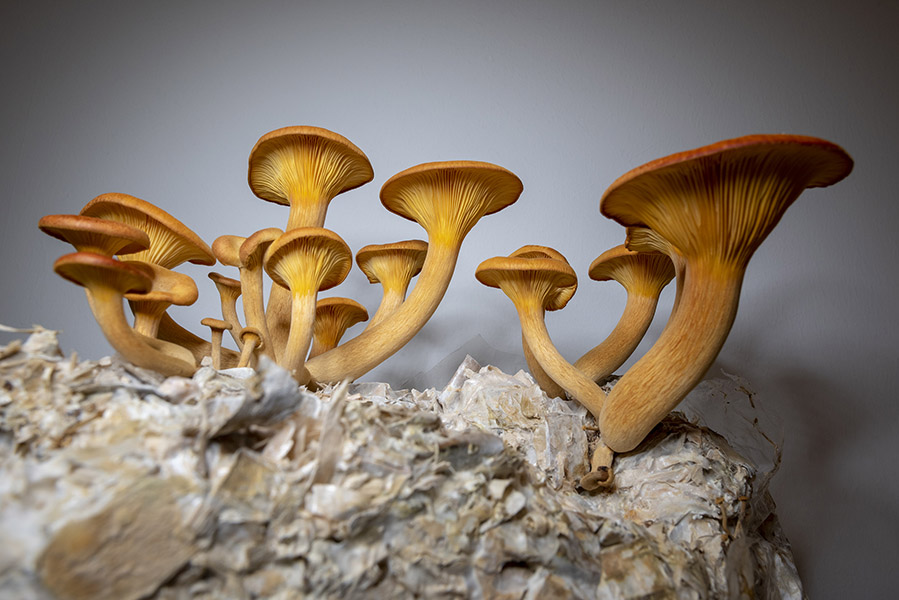



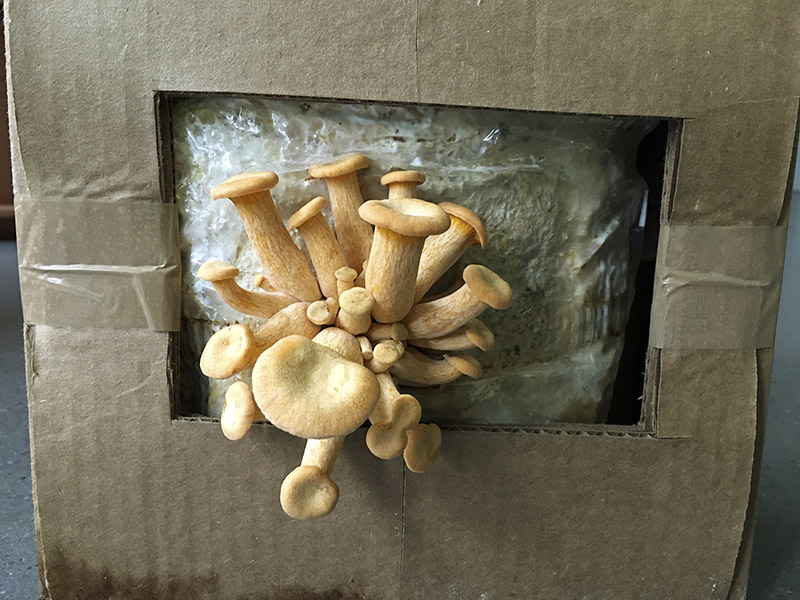
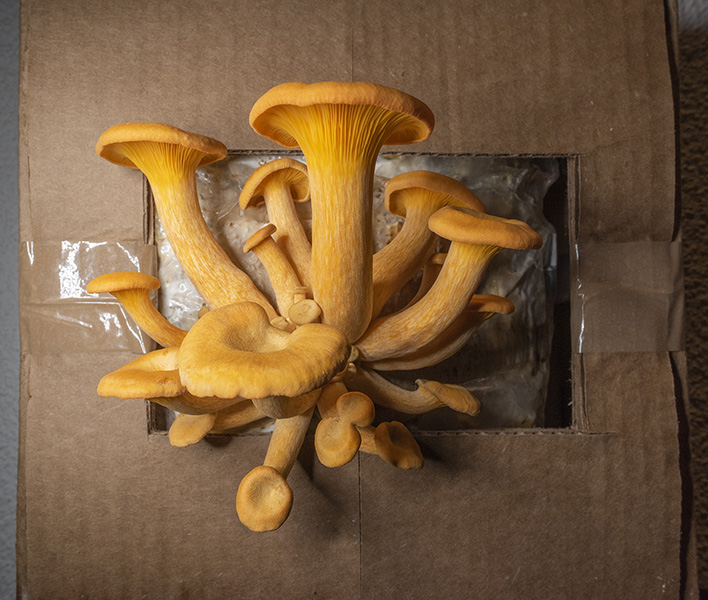

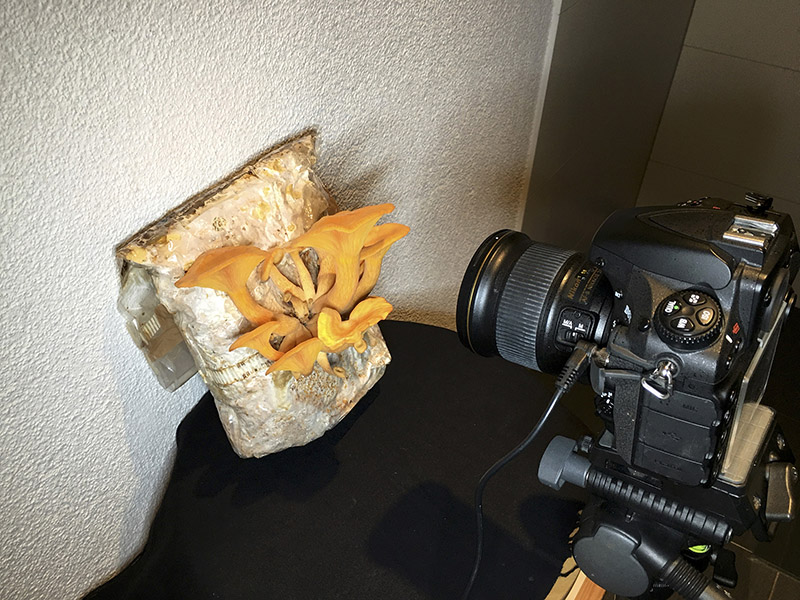
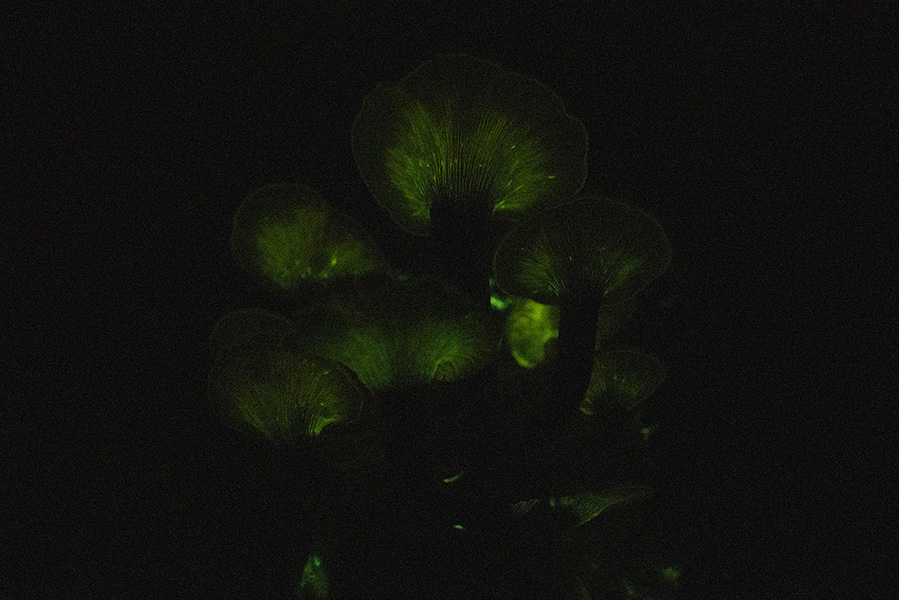
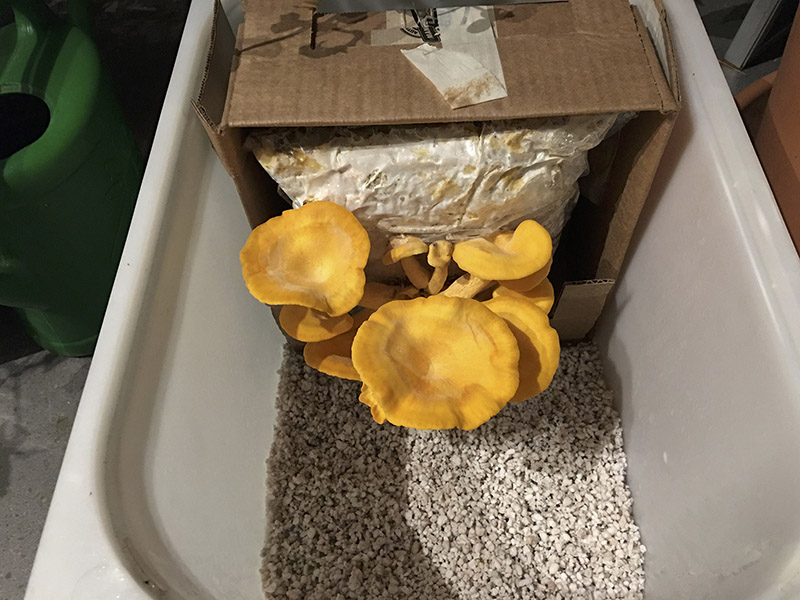
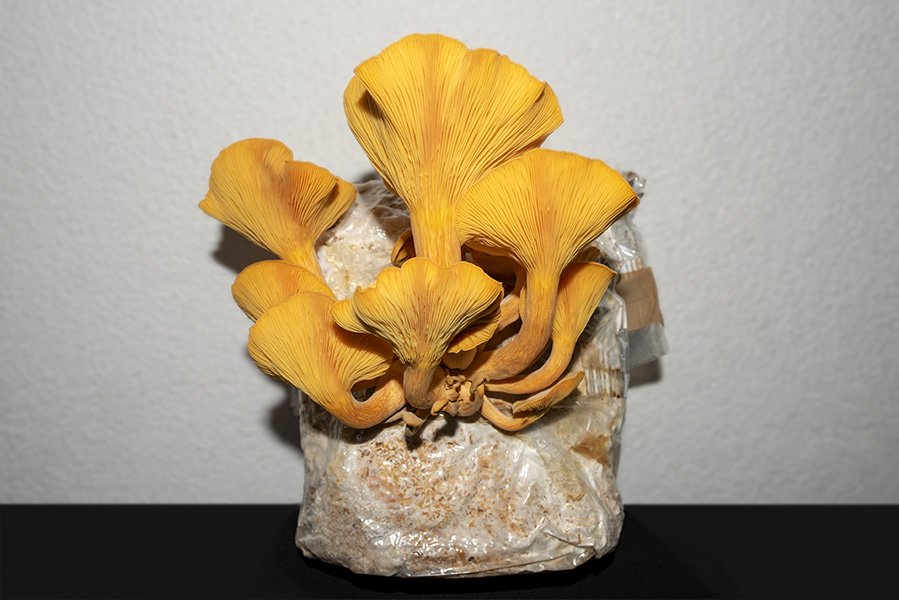
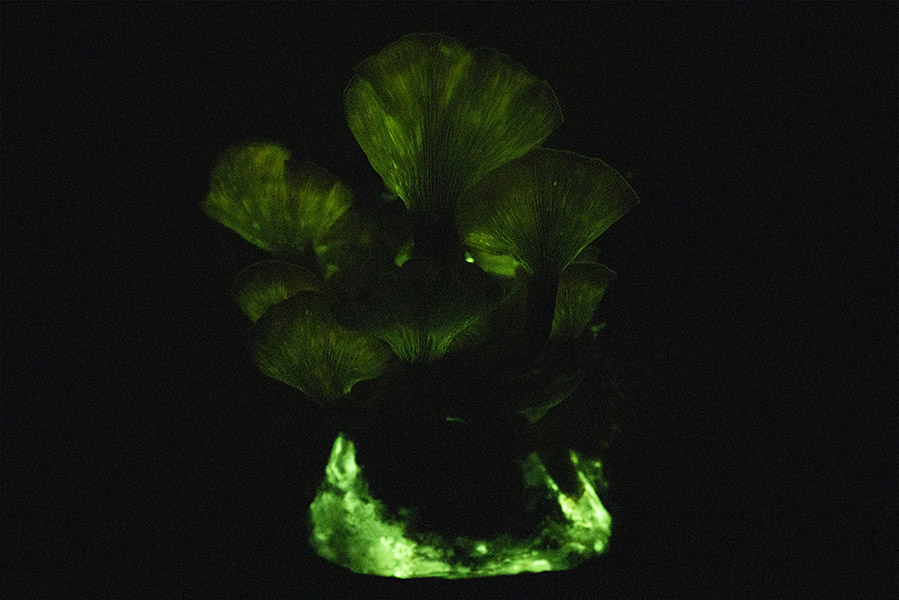
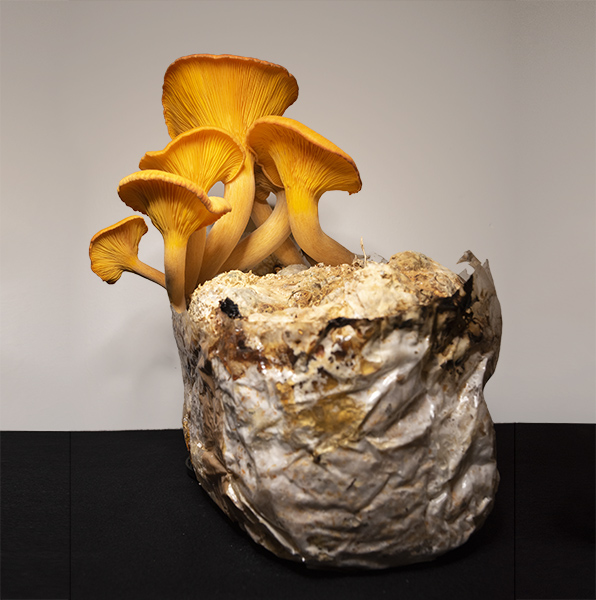


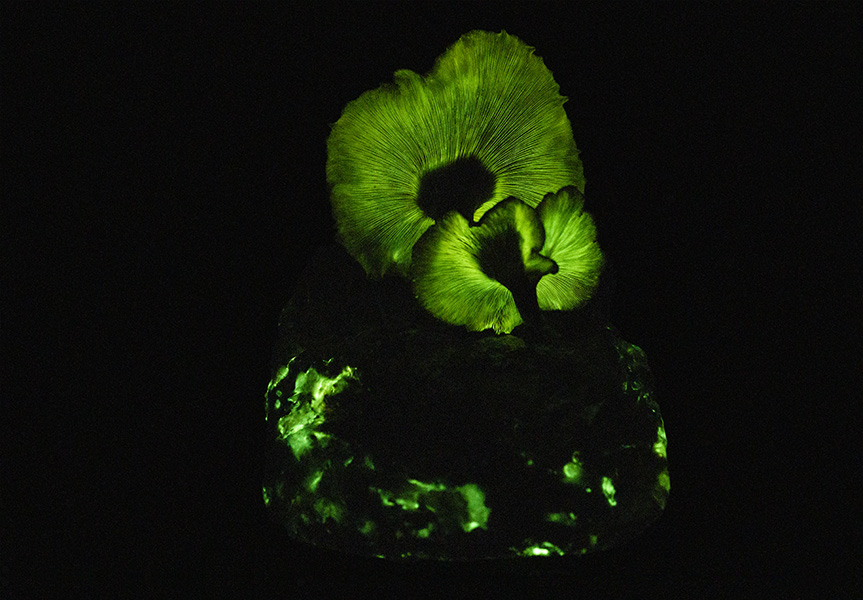
Visibility
The fruiting bodies are bioluminescent on the underside of the cap, the lamellae. The glow is not visible when viewed from above.
Young fruiting bodies glow somewhat more weakly than fully grown specimens.
The magical phenomenon is visible to the naked eye.
To do this, however, the eyes must first be well adapted to the darkness, as the light emitted by the mushrooms is only very weak.
For whom might the light be intended?
For those who are meant to see it perhaps they see it much more clearly and distinctly than we are able to see it?
Photographic data
The photos were taken with a Nikon D810.All night shots were taken in complete darkness.
Settings: F 3,2 / ISO 8000 / Exposure time 5-7min.
